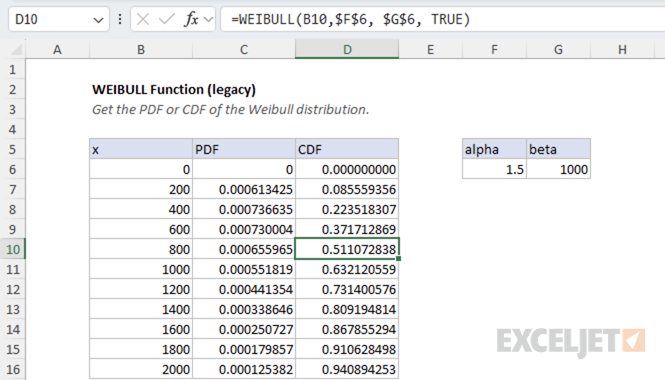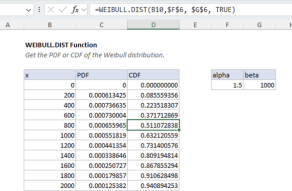Purpose
Return value
Syntax
=WEIBULL(x,alpha,beta,cumulative)- x - The value at which to evaluate the distribution (must be ≥ 0).
- alpha - The shape parameter of the distribution (must be > 0).
- beta - The scale parameter of the distribution (must be > 0).
- cumulative - A logical value that determines the form of the function. If TRUE, returns the cumulative distribution function; if FALSE, returns the probability density function.
Using the WEIBULL function
The WEIBULL function calculates values for the Weibull distribution, which is a continuous probability distribution commonly used to model the time until failure of a component or system. The Weibull distribution is particularly useful in reliability engineering, survival analysis, and failure time analysis, as it can model increasing, constant, or decreasing failure rates depending on the value of the shape parameter (alpha).
For better accuracy and consistency with other modern statistical functions, it is recommended to use the WEIBULL.DIST function. WEIBULL.DIST uses the same arguments and provides the same core functionality with improved numerical precision. See the WEIBULL.DIST function for more details.
Notes
-
WEIBULLis a legacy function. For Excel 2010 and later, use theWEIBULL.DISTfunction. -
If any argument is non-numeric,
WEIBULLreturns the #VALUE! error. -
If x < 0,
WEIBULLreturns the #NUM! error. -
If alpha ≤ 0 or beta ≤ 0,
WEIBULLreturns the #NUM! error.








